オールマウンテンスキー、フリーライドスキー、またはSnowfeetギアのような全く異なるもののどれを選ぶかは、どんなスキー体験を求めているかにかかっています。ここに簡単な概要を示します:
- All-Mountain Skis:整備されたトレイルを主に滑るスキーヤーに最適ですが、氷の斑点や軽いPOWDERにも対応できる柔軟性があります。万能型のオプションですが、特定の条件で特に優れているわけではありません。
- Freeride Skis:パウダーとオフピステスキーのために作られています。深雪やバックカントリーの冒険が好きなら、これがぴったりです。ただし、整備されたトレイルにはあまり向いていません。
- Snowfeet Gear:コンパクトで軽量、そして財布に優しい代替品です。これらのミニスキーとskiskatesは通常の冬用ブーツで使え、初心者やもっとシンプルで持ち運びやすいオプションを求める方に最適です。
簡単な比較が欲しいですか?価格、地形、使いやすさの面での比較表を以下でご覧ください。
簡単比較
| 特徴 | オールマウンテンスキー | フリーライドスキー | Snowfeet製品 |
|---|---|---|---|
| 長さ | 60~72インチ(152~183 cm) | 65~75インチ(165~190 cm) | 15~47インチ(38~120 cm) |
| 価格帯 | $400〜$1,200 + ブーツ | $500〜$1,500 + ブーツ | $150〜$690(特別なブーツは不要) |
| ブーツの要件 | 専用のスキーブーツ | 専用のスキーブーツ | 通常の冬用ブーツ、スノーボードブーツ、またはハイキングブーツ |
| 最適な地形 | 圧雪されたコース、軽いPOWDER | 深いPOWDER、バックカントリー | 整備されたコース、スノーパーク、ハイキングトレイル、裏庭 |
| 習得難易度 | 中級から上級者向け | 上級者からエキスパート向け | 簡単から中級 |
| 携帯性 | かさばり、スキーバッグが必要 | かさばり、スキーバッグが必要 | バックパックに収まる |
シンプルさ、携帯性、そしてかさばるギアの手間なしに雪を楽しむ楽しい方法をお探しなら、Snowfeetが最適かもしれません。各オプションの詳細な解説を読み進めてください!
2024年のベストスキー!オールマウンテン、POWDER、フリーライドなど!
オールマウンテンスキー:特徴と最適な使い方
オールマウンテンスキーはスキーギアのスイスアーミーナイフのようなもので、滑らかな圧雪路から氷のパッチ、さらには軽いPOWDERまで、さまざまなコンディションに対応できるよう設計されています。山が投げかけるほとんどの状況に対応できる一本のスキーを求めるタイプのスキーヤーには、これが最適な選択肢です。
オールマウンテンスキーの主な特徴
オールマウンテンスキーのウエスト幅は通常80〜100mmで、最適な範囲は85〜95mmです。この幅は絶妙なバランスを実現しており、柔らかい雪での浮力を十分に提供しつつ、硬い地形でもしっかりとしたエッジグリップを発揮します。Salomon、Rossignol、Volklなどの人気ブランドは、この範囲内でオールマウンテンスキーを製造する傾向があります。
ロッカープロファイルも重要な特徴です。ほとんどのオールマウンテンスキーは、足下にキャンバー、先端(時にはテールにも)にロッカーを組み合わせたハイブリッドデザインを採用しています。この組み合わせにより、硬い雪面でのカービングに強いエッジホールドを提供するキャンバーと、ターンの開始を容易にし、柔らかい雪での浮力を増すロッカーの両方の利点を享受できます。
構造に関しては、木製コアにファイバーグラスやカーボンファイバーなどの素材で補強されていることが多いです。長さは身長や滑り方によって150〜180cmの範囲が一般的です。これらのスキーはサイドカット半径が16〜20メートルの範囲にあり、中程度の半径のターンをサポートします。さまざまな地形をナビゲートするのに最適です。
オールマウンテンスキーを使うタイミング
オールマウンテンスキーは日常のスキーシーンで輝きます。圧雪された雪の上でターンを刻むときも、日が進むにつれて変わるコンディションに対応するときも、これらのスキーは適応するように作られています。
地形が変わるときに特に便利です。想像してみてください:広く開けたトレイルを滑り降りているかと思えば、次の瞬間には木々の間を縫うように滑ったり、モーグルに挑戦したりしています。雪の状態が氷のようになったり、シャーベット状になったり、柔らかいPOWDERになったりしても、オールマウンテンスキーは一切の妥協なく対応します。
POWDER専用スキーではありませんが、軽いPOWDERでも十分に対応できます。しっかりとした技術があれば、Vailのようなリゾートやお気に入りの地元の山で新雪を楽しむことができ、場違いに感じることはありません。
オールマウンテンスキー:長所と短所
メリット
- 多用途性: これらのスキーはほぼすべての状況に対応できるよう作られているため、異なる条件用に複数のペアを持つ必要がありません。これにより、費用と収納スペースの節約になります。
- 使いやすさ: 中級者や上級者はその予測可能な性能を好みます。自信をつけるのに十分な許容性がありながら、より難しいコースに必要なパワーも提供します。
- 再販価値: 幅広い人気が中古市場での強い需要につながることが多いです。
デメリット
- 万能型: 多くの条件で良いですが、どの分野でも突出しているわけではありません。例えば、深雪ではPOWDERスキーほど浮かず、氷結したハードパックではレーススキーほど鋭くカービングできません。
- 重量: 多くのオールマウンテンスキーは耐久性を重視していますが、その分重くなり、長時間の滑走や新雪を求めてのハイクアップ時にそれを感じるでしょう。
- 高度なニーズ: 上達するにつれて、特定の条件に特化した専用スキーの性能を求めるかもしれません。
代替を探しているなら、Snowfeet*のような選択肢を検討してください。これらのスキーブレードやSkiskatesは軽量で携帯性に優れ、使いやすいセットアップを提供し、斜面を楽しむユニークな方法を提供します。オールマウンテンスキーがバランスの取れた性能を提供する一方で、Snowfeet*はシンプルさと利便性に焦点を当てており、特定のスキーヤーにとって魅力的な選択肢となっています。
フリーライドスキー:特徴と最適な用途
フリーライドスキーはPOWDERに満ちた冒険、急斜面、そして人里離れた地形のために作られています。オールマウンテンスキーが苦戦するような状況で輝きます。未踏の雪を滑り抜けたり、バックカントリーボウルを大胆にカービングする自分を想像しているなら、フリーライドスキーはそのビジョンを実現するための道具です。
フリーライドスキーの主な特徴
フリーライドスキーで最初に気づくのはその幅です。これらのスキーは通常、ウエスト幅が100〜130mmの範囲で、多くの人気モデルは110〜120mmの範囲にあります。その余分な幅が表面積を増やし、深雪での浮力を向上させます。
もう一つの際立った特徴はロッカープロファイルです。ほとんどのフリーライドスキーはフルロッカーまたはロッカー-キャンバー-ロッカーのデザインを採用しており、先端とテールの両方に目立つ反り上がりがあります。この形状はPOWDERでのターンの開始を容易にし、先端が雪の下に潜り込むのを防ぎます。深いコンディションでの滑らかで楽な動きを追求しています。
構造的には、フリーライドスキーはしばしばカーボンファイバーやチタナルで補強された軽量の木製コアを含みます。この組み合わせは耐久性と衝撃吸収のバランスが良く、荒れた地形やジャンプに理想的です。また、一般的に長めで—170〜190cmを想定—高速での安定性を高め、パウダーでの浮力を向上させます。さらに、サイドカット半径が大きめ(20〜30メートル)で、素早く鋭いターンよりも長く滑らかなターンに適しています。
フリーライドスキーを使うタイミング
フリーライドスキーは圧雪トレイルを離れるときの頼れる相棒です。特に6インチ以上の新雪が山を覆うパウダーデーに最適です。オールマウンテンスキーがこうした条件で苦戦する一方で、フリーライドスキーは楽に滑走させてくれます。
これらのスキーはバックカントリーでも輝きます。ジャクソンホールで新鮮なラインを追いかけたり、ウィスラー周辺の広大な地形を探検したりする際に最適です。雪がクラスト状、風で固まった状態、または複数の質感が混ざった状態でもオフピステの変化にうまく対応します。長めの長さと幅広のウエストが急斜面での安定性を提供し、ロッカープロファイルが難しい勾配でもコントロールを保つのに役立ちます。
より軽量でコンパクトな代替品として、Snowfeet*製品をチェックしてください。従来のフリーライドギアのかさばりを感じさせず、遊び心があり操作しやすいオプションを提供します。
フリーライドスキー:メリットとデメリット
メリット
- パウダーパワー: 幅広のウエストとロッカープロファイルにより、深い雪の上で浮遊感を保ち、比類なき滑走を実現します。
- スピード時の安定性: 長めの長さとしっかりした作りが、急斜面や不均一な地形を高速で滑る際に優れた安定性を提供します。
- 急斜面での自信: そのデザインは、難しい斜面に挑むための安定性を与えてくれます。
デメリット
- 圧雪バーンには不向き: 硬く締まった雪や圧雪トレイルでは、フリーライドスキーは扱いにくく感じることがあります。幅広のウエストはエッジからエッジへの切り替えを遅くし、細いスキーほど正確にカービングできません。
- 重めの作り: 頑丈な構造は重量を増し、長時間の使用や持ち運びの際にそれを実感するでしょう。
- 慣れが必要: より軽くて細いスキーから切り替える場合、最初は操作感が少し違うと感じるかもしれません。
- ニッチな用途: POWDERやオフピステのコンディションでは素晴らしいですが、より管理された地形での日常的なスキーにはあまり万能ではありません。
まったく新しいものをお探しなら、Snowfeet* のスキーブレードと Skiskates は楽しくて軽量な代替品です。使いやすく、特定の雪の条件に縛られないため、より幅広いスキーヤーに最適な選択肢です。
Snowfeet*:冬のスポーツギアのスマートな選択

なぜいつものオールマウンテンやフリーライドスキーにこだわるのですか?Snowfeet* 製品は冬のスポーツに新しい視点をもたらし、従来のスキーギアに伴う多くの面倒を回避できるコンパクトで軽量な選択肢を提供します。
Snowfeet* の特長は?
従来のスキー(60~72インチ)やスノーボード(54~66インチ)は大きくて重く、正直持ち運びが面倒です。Snowfeet* は非常にコンパクトな製品でその常識を覆します。Mini Ski Skates はわずか 15インチ(38cm)、Skiskates は 17.3インチ(44cm)、そして大きめの Snowfeet PRO でも 19.7インチ(50cm) です。
この小さいサイズが生活を楽にします。かさばるスキーバッグやルーフラックは不要で、飛行機の超過手荷物料金もかかりません。バックパックに放り込んだり、ベッドの下に隠したり、車のトランクに入れておけます。いつでも準備万端です。
もう一つのゲームチェンジャー?200ドルから800ドルもする重くてかさばるスキーブーツは忘れてください。Snowfeet* は普段の冬用ブーツ、スノーボードブーツ、さらにはハイキングブーツでも使えます。これは財布にも快適さにも大きな勝利です。
なぜ Snowfeet* は従来のギアより優れているのか
短いギアは単にスペースを節約するだけでなく、冬のスポーツをより楽しく、親しみやすくします。Snowfeet* が際立つ理由は次の通りです:
- 学びやすい:従来のスキーやスノーボードのかさばる装備がないため、初心者は重い装備と戦うことなく技術に集中できます。小さいサイズがよりコントロールしやすく、自信を早くつけられます。
- より多用途:Snowfeet* ギアは様々な地形で使えます - 整備された斜面、スノーパーク、ハイキングトレイル、さらには自宅の庭でも。特定の条件や場所に縛られません。
- 手間いらずの収納と輸送:コンパクトなデザインが物流の悩みを解消します。スキーラック不要、収納の悩みなし、ストレスフリーです。
数字もそれを裏付けています:2,235件の評価のうち90%がポジティブです。人々は Snowfeet* が冬の冒険にもたらす自由さとシンプルさを愛しています。
"世界で最も多用途なミニスキー - Snowfeet PRO は、世界で最も多用途なスキー装備として設計されており、高耐久のガラス繊維強化素材で作られています。Snowfeet のすべての素晴らしい特徴を維持し、さらに多用途にしました。"
すべてのライダーのための Snowfeet* オプション
初心者でも経験豊富なスキーヤーでも、あなたにぴったりのSnowfeet*製品があります。しかも、すべて伝統的なセットアップよりも手頃な価格帯です。
- Snowfeet Mini Ski Skates:価格は $150 から、長さは15インチ(38 cm)。初心者や携帯性を重視する方に最適です。どんなバックパックにも入る小ささで、カジュアルな雪遊びにぴったりです。
- Snowfeet PRO:価格は $199、長さは19.7インチ(50 cm)まで伸びます。ガラス繊維強化素材で作られており、耐久性とパフォーマンスに優れつつコンパクト。調節可能なバインディングと複数のカラーバリエーションも魅力です。
- Skiskates:価格は $390 から、17.3インチ(44 cm)のこれらのオプションはパフォーマンスを高める木製コアを特徴としています。持ち運びが簡単で斜面を攻略するのに最適です。
- Skiblades:65 cm と 99 cm の長さで利用可能、価格は $450 から。Snowfeet POWDER(99 cm)はパウダーコンディション用に設計されており、価格は $490。最長のオプションである 120 cmのショートスキー でもわずか $690、伝統的なスキーよりもはるかに扱いやすいです。
| 装備タイプ | 長さ | 重量 | 収納 | 輸送方法 |
|---|---|---|---|---|
| Snowfeet Mini Ski Skates | 15 インチ (38 cm) | 軽量 | バックパック / クローゼット | 機内持ち込み手荷物 |
| Snowfeet Skiskates | 17.3 インチ (44 cm) | 軽量 | バックパック / クローゼット | 機内持ち込み手荷物 |
| Snowfeet PRO | 19.7 インチ (50 cm) | 軽量 | バックパック / クローゼット | 機内持ち込み手荷物 |
| 伝統的なアルペンスキー | 60–72 インチ (152–183 cm) | 1スキーあたり8~12ポンド | 専用スペース(ガレージ、リゾートロッカー) | スキーバッグ / ルーフラック |
| スノーボード | 54~66インチ(137~168 cm) | 6~10ポンド | 専用スペース(ガレージ、リゾートロッカー) | ボードバッグ / ルーフラック |
選択は明確です:Snowfeet*はウィンタースポーツをよりシンプルに、アクセスしやすく、そしてずっと楽しくします。従来のギアの面倒とはさよならし、より柔軟で楽しいスロープの楽しみ方を迎えましょう。
sbb-itb-17ade95
並べて比較:オールマウンテン vs フリーライド vs Snowfeet*
詳しく見てみましょう:オールマウンテンスキー、フリーライドスキー、そしてSnowfeet*はどう違うのか? 以下は、スキーヤーが最も気にする特徴に基づいたこれらの選択肢の直接比較です。
比較チャート
| 特徴 | オールマウンテンスキー | フリーライドスキー | Snowfeet* 製品 |
|---|---|---|---|
| 長さ | 60~72インチ(152~183 cm) | 65~75インチ(165~190 cm) | 15~47インチ(38~120 cm) |
| 価格帯 | $400〜$1,200 + ブーツ($200〜$800) | $500〜$1,500 + ブーツ($200〜$800) | $150〜$690(特別なブーツは不要) |
| ブーツの要件 | 専用のスキーブーツ | 専用のスキーブーツ | 通常の冬用ブーツ、スノーボードブーツ、またはハイキングブーツ |
| 最適な地形 | 整備されたコース、軽いオフピステ | 深いPOWDER、バックカントリー | 整備されたコース、スノーパーク、ハイキングトレイル、裏庭 |
| 習得難易度 | 中級から上級者向け | 上級者からエキスパート向け | 簡単から中級 |
| 携帯性 | スキーバッグとルーフラックが必要 | スキーバッグとルーフラックが必要 | バックパックや機内持ち込み手荷物に収まる |
| 収納スペース | ガレージ、地下室、またはリゾートのロッカー | ガレージ、地下室、またはリゾートのロッカー | クローゼット、ベッドの下、または車のトランク |
| メンテナンス | 定期的なワックスがけとエッジ調整 | 定期的なワックスがけとエッジ調整 | 最小限のメンテナンス |
| 多様性 | 全体的に良好なパフォーマンス | POWDER条件に特化 | 複数の地形やアクティビティで使える |
| 楽しさの要素 | 伝統的なスキー体験 | 適切な条件でスリリング | すぐに楽しめる高い楽しさ |
| 旅行に便利 | かさばり、輸送に高額な費用がかかる | かさばり、輸送に高額な費用がかかる | 追加料金なしで簡単にパッキング可能 |
このチャートはこれらの選択肢がいかに異なるかをよく示しています。従来のスキーのコストや複雑さにうんざりしているなら、Snowfeet*はあなたが探していたゲームチェンジャーかもしれません。わずか150ドルから始まり、専門的なブーツや大きな装備なしで、よりシンプルで手頃な価格で斜面を楽しむ方法を提供します。
Snowfeet*の際立った特徴の一つは携帯性です。従来のスキーは長さが5~6フィートあり、ルーフラックが必要で、旅行時には追加の荷物料金がかかることもあります。一方、Snowfeet*は15インチから47インチまでのサイズで、バックパックや機内持ち込み手荷物にも収まります。かさばる装備に苦労することはもうありません。
習得の難易度もSnowfeet*が従来のスキーを凌ぐポイントです。特にフリーライドモデルは初心者には敷居が高く、深いPOWDERや難しい地形を扱うには高度な技術が必要です。Snowfeet*のコンパクトなデザインは操作がずっと簡単で、新しいユーザーが圧倒されることなく技術向上に集中できるよう助けます。
地形の多様性に関しては、違いは明らかです。オールマウンテンスキーは様々な条件でそこそこの性能を目指しますが、どの分野でも突出することは稀です。フリーライドスキーは深いPOWDERで素晴らしいですが、整地されたコースでは扱いにくく感じることがあります。しかし、Snowfeet*製品は整地された斜面、スノーパーク、さらにはハイキングトレイルや裏庭の丘のような変わった場所でもしっかりとしたパフォーマンスを発揮します。
そしてメンテナンスも忘れてはいけません。従来のスキーは定期的なワックスがけ、エッジ調整、そして時にはプロのメンテナンスが必要で、時間も費用もかかります。一方、Snowfeet*製品はメンテナンスが最小限で済むため、ギアの調整にかける時間を減らし、雪を楽しむ時間を増やせます。
要するに、Snowfeet*はシンプルさ、利便性、多用途性を重視する現代のスキーヤーのすべての要望を満たします。斜面を滑るときも、スノーパークを探検するときも、裏庭で遊ぶときも、伝統的なギアの面倒なしに本格的な楽しさを提供します。
選び方:スキルレベル別のおすすめ
適切なスノーギアの選択は、経験とスロープで達成したいことに大きく依存します。ここでは、異なるスキルレベルに合わせたおすすめと、なぜSnowfeet*が伝統的なセットアップに代わる優れた選択肢であるかを解説します。
初心者に最適なオプション
初心者の方には、Snowfeet* Mini Ski Skates (38 cm)が素晴らしい選択です。価格は$150で、伝統的なスキー(60〜72インチの長さ)よりもコンパクトで操作がずっと簡単です。より耐久性のあるオプションとして、$199のSnowfeet* PROは調整可能なビンディングと頑丈な作りを持ちながら、小さく扱いやすいサイズを維持しています。最高なのは、どちらのオプションも通常の冬用ブーツが使えること。高価なスキーブーツを買う必要はありません。さらに、携帯性に優れたデザインで、裏庭の丘や地元の斜面、小さなエリアでの練習に最適です。
自信と技術が向上するにつれて、Snowfeet*は携帯性を損なうことなくパフォーマンスを提供し続けます。
中級者および上級者に最適なオプション
Snowfeet*は初心者だけのものではありません。経験豊富なスキーヤーも多くの魅力を見つけるでしょう。中級者や上級者向けの伝統的なセットアップは通常、ウエスト幅88 mmから100 mmのオールマウンテンスキーですが、Snowfeet*はより多用途な選択肢を提供します。
より大きな挑戦に挑みたい方には、Snowfeet* Skibladesがおすすめです。65 cmのバージョンは$450から、99 cmのバージョンは$490です。これらのスキーブレードは整地されたコース、スノーパーク、さらにはハイキングトレイルも楽にこなせるよう設計されています。伝統的なスキーヤーが異なる条件に合わせて複数のスキーを必要とするのに対し、Snowfeet* Skibladesの1ペアで幅広い用途をカバーでき、さらに持ち運びやメンテナンスもずっと簡単です。
パウダーが好きなら、Snowfeet* POWDER (99 cm)を$490でチェックしてください。これは柔らかい雪のために特別に作られており、伝統的なフリーライドスキー(通常$800以上)に代わる旅行に便利な選択肢です。より長いオプションを好む方には、Snowfeet* Short Skis (120 cm)が$690で、持ち運びやすさを保ちながらパフォーマンスを拡張します。
なぜSnowfeet*がほとんどの人に最適なのか
Snowfeet* はオールマウンテンスキーの多用途性とフリーライドのシンプルさを組み合わせ、ウィンタースポーツ愛好者にとってのゲームチェンジャーです。従来のスキーギアはスキーだけでなく専門的なブーツやその他の装備も高額で、メンテナンスや保管の手間もかかります。Snowfeet* はコンパクトで携帯性に優れ、予算にも優しいデザインでこれらの問題を解決します。
実用性を超えて、Snowfeet* はスキスケーティングをウィンタースポーツの新しいアプローチとして牽引しています。いつかオリンピック種目になるという話もあります!
初心者が手軽に始めたい時も、エキスパートが多用途で手間のかからないセットアップを求める時も、Snowfeet* は余計な荷物なしでウィンタースポーツの楽しさを保つ新鮮な選択肢を提供します。
結論
スノーギア選びは、性能、価格、携帯性の3つに尽きます。オールマウンテンスキーは多様な地形に対応できますが、かさばる装備、高額な価格、専門的なブーツが必要という欠点があります。一方、フリーライドスキーは POWDER やオフピステで輝きますが、さらに専門的で、異なる雪質に合わせて複数のペアが必要になることもあり、コストがかさみます。
ここで Snowfeet* がゲームチェンジャーとなります。多用途性と利便性を兼ね備え、従来のスキータイプのギャップを埋めつつ、面倒な点を排除しています。150ドルからのコンパクトな Mini Ski Skates で素早く学ぶもよし、490ドルの高性能 Skiblades でより高度な冒険に挑むもよし。整備されたコース、POWDER、スノーパーク、さらにはハイキングトレイルでも使えます。さらに、通常の冬用ブーツで使えるので、高価で特殊な靴は不要です。
従来のスキーセットアップは、スキー、ブーツ、ビンディングを含めると簡単に1,000ドル以上かかります。それに比べて、Snowfeet* の価格は150ドルから690ドルとずっと手頃です。しかもコンパクトなので、バックパックに入れて雪のあるどこへでも持ち運べます。自宅の裏庭でも大きなスキーリゾートでもOK。オールマウンテンやフリーライドスキーは特定の用途に特化しトレードオフがありますが、Snowfeet* はあらゆる地形で使えるバランスの取れたソリューションを提供します。
Snowfeet* は単なるギアではなく、ウィンタースポーツに新たな道を切り開いています。長いスキー=高性能という古い常識に挑戦し、短いスキーがより多くの楽しさ、自由、そして多様性をもたらすことを証明しています。この新しいアプローチがスノースポーツギアの可能性を再定義しています。
初心者でもベテランでも、Snowfeet* は従来の装備では到底かなわない携帯性と手軽さを提供します。もうオールマウンテンかフリーライドかを選ぶ時代ではありません。Snowfeet* と共にスノースポーツの未来へ踏み出しましょう。
よくある質問
オールマウンテンスキーとフリーライドスキーの違いは何で、どちらがあなたの地形に適しているか?
オールマウンテンスキーは柔軟性があり、整備されたトレイルと軽いPOWDERの両方を楽にこなせます。ウエスト幅は約85~100mmで、ピステとオフピステの両方でバランスの良い性能を発揮します。一方、フリーライドスキーは異なるアプローチを取ります。幅が広く(通常104mm以上)、深雪、POWDER、バックカントリーの冒険に適しています。浮力とゆるい雪での操作性に優れていますが、整備されたコースではそれほど機敏ではありません。
新鮮でモダンなものを探しているなら、SnowfeetのskibladesとSkiskatesが注目を集めるかもしれません。これらのコンパクトで軽量な代替品は、多用途性において従来のスキーやスノーボードを凌駕します。使いやすく楽しく、さまざまな地形でよく機能します。初心者でも経験豊富なスキーヤーでも、Snowfeet製品は伝統的なギアのかさばりを感じさせないダイナミックで手間いらずの体験をもたらします。
なぜSnowfeetのギアは従来のスキーやスノーボードと比べて初心者にとってより良い選択なのか?
Snowfeetのギアは、斜面に挑戦したい初心者にとってゲームチェンジャーです。コンパクトな長さ(15インチから47インチまで)と軽量設計により、従来のスキーやスノーボードよりも扱いやすくなっています。これにより、初心者の恐怖感が減り、より早く楽しい学習曲線を実現します。
さらに良いのは?Snowfeetのギアは通常の冬用ブーツとシームレスに組み合わせられます。かさばる専用ブーツやビンディングに投資する必要はありません。これによりセットアップが簡単になるだけでなく、さまざまな地形を自由に探検することができます。冬のスポーツ初心者にとって、Snowfeetはシンプルで親しみやすい入門方法を提供します。
Snowfeet製品はどのような条件で従来のスキーやスノーボードよりも優れているのか?
Snowfeetのギアは携帯性、使いやすさ、適応性を重視しています。軽量でコンパクトなデザインのおかげで、カジュアルな雪遊びや初心者向けの斜面、さらには重く湿った雪にも最適です。従来のスキーやスノーボードとは異なり、Snowfeetは持ち運びが簡単で、装着もシンプル、耐久性もあり、さまざまな雪の条件に対応できる優れた選択肢です。
柔軟性と自由度に関しても、彼らはゲームチェンジャーです。狭いトレイルを縫うように進む時も、オフピステに挑戦する時も、または手軽で気軽なライドを求める時も、Snowfeetは応えてくれます。深いPOWDERから即興のスロープセッションまで、かさばる冬の装備に代わる楽しく手間いらずの選択肢を提供します。







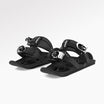

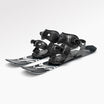
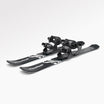

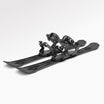

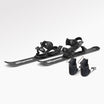






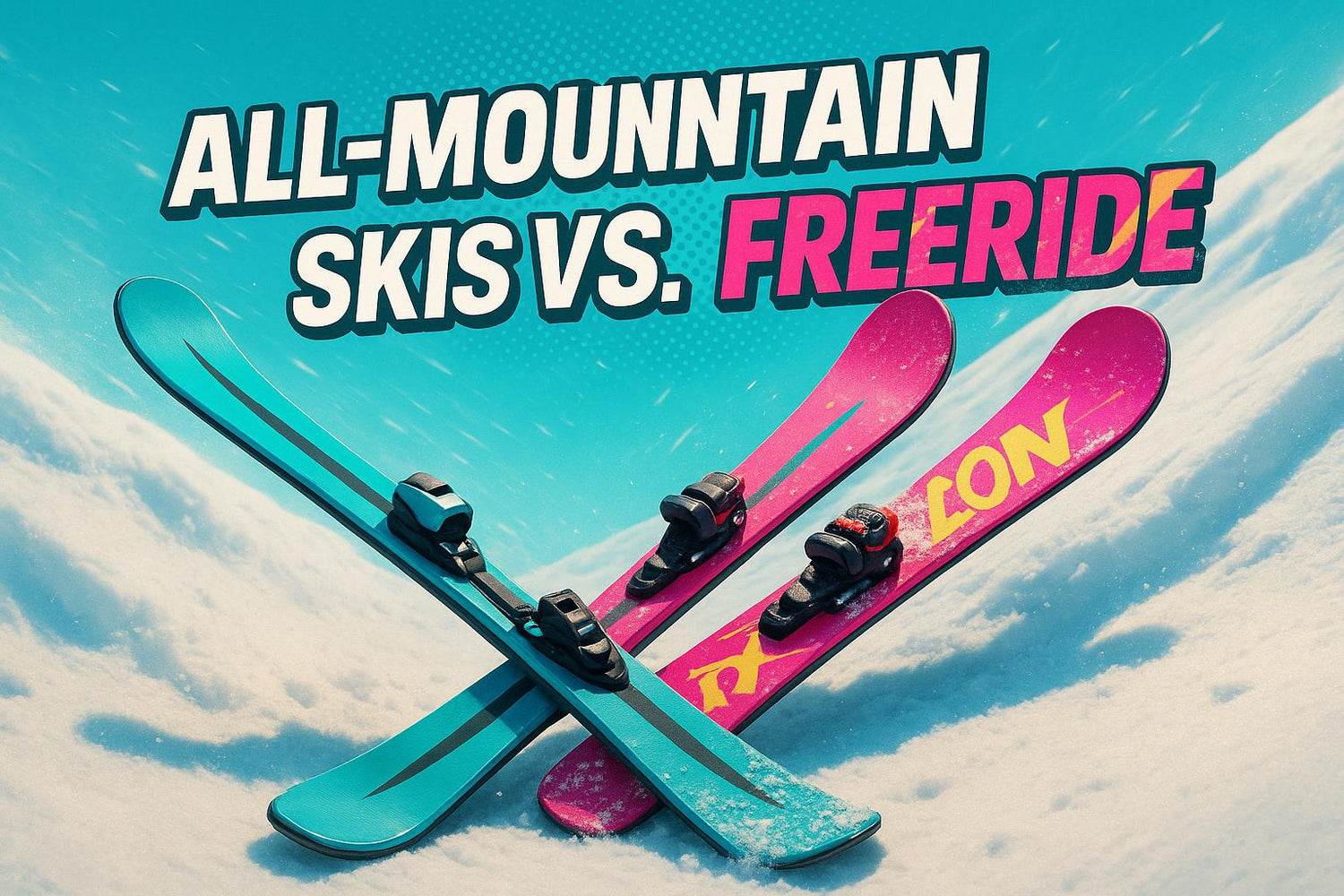
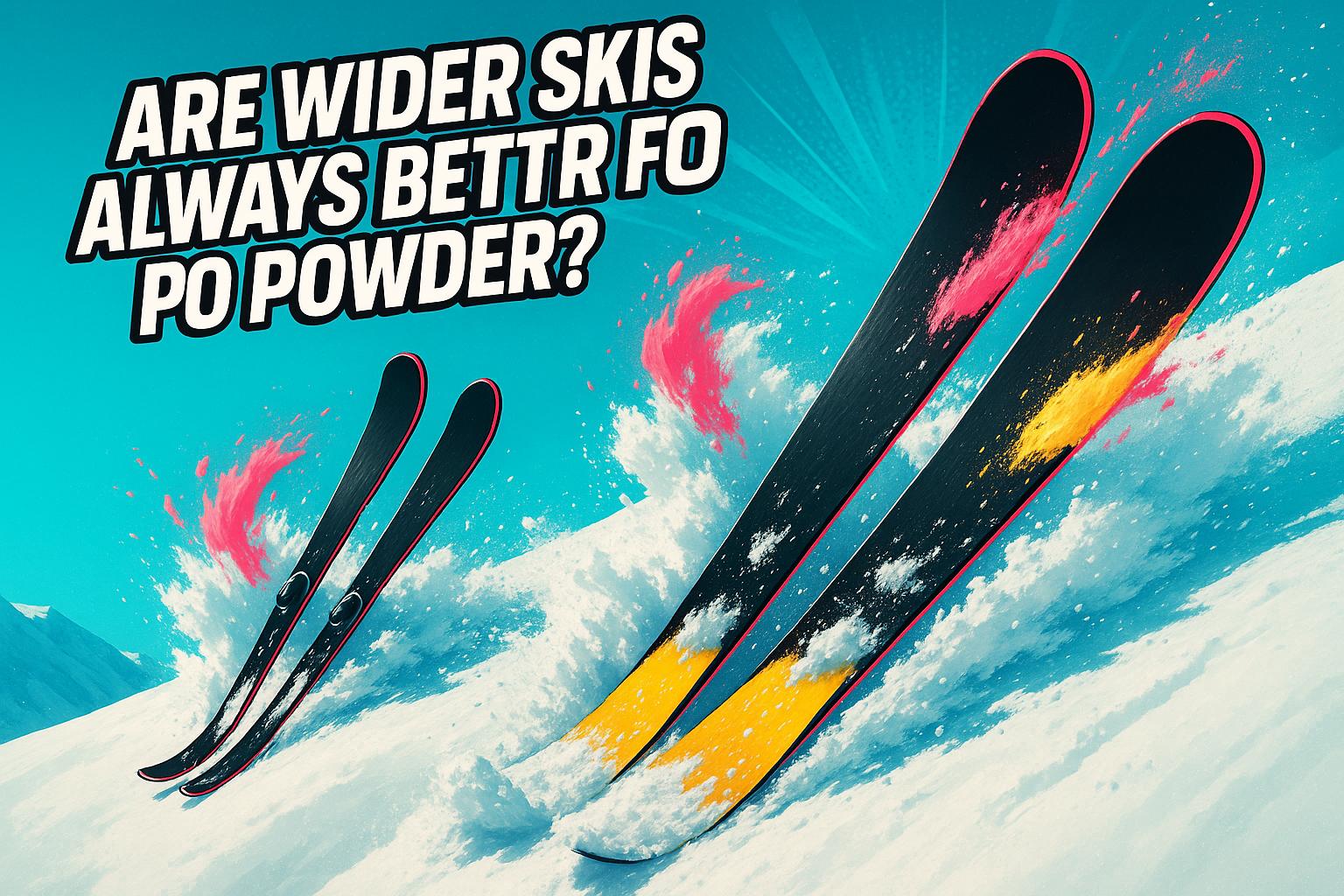


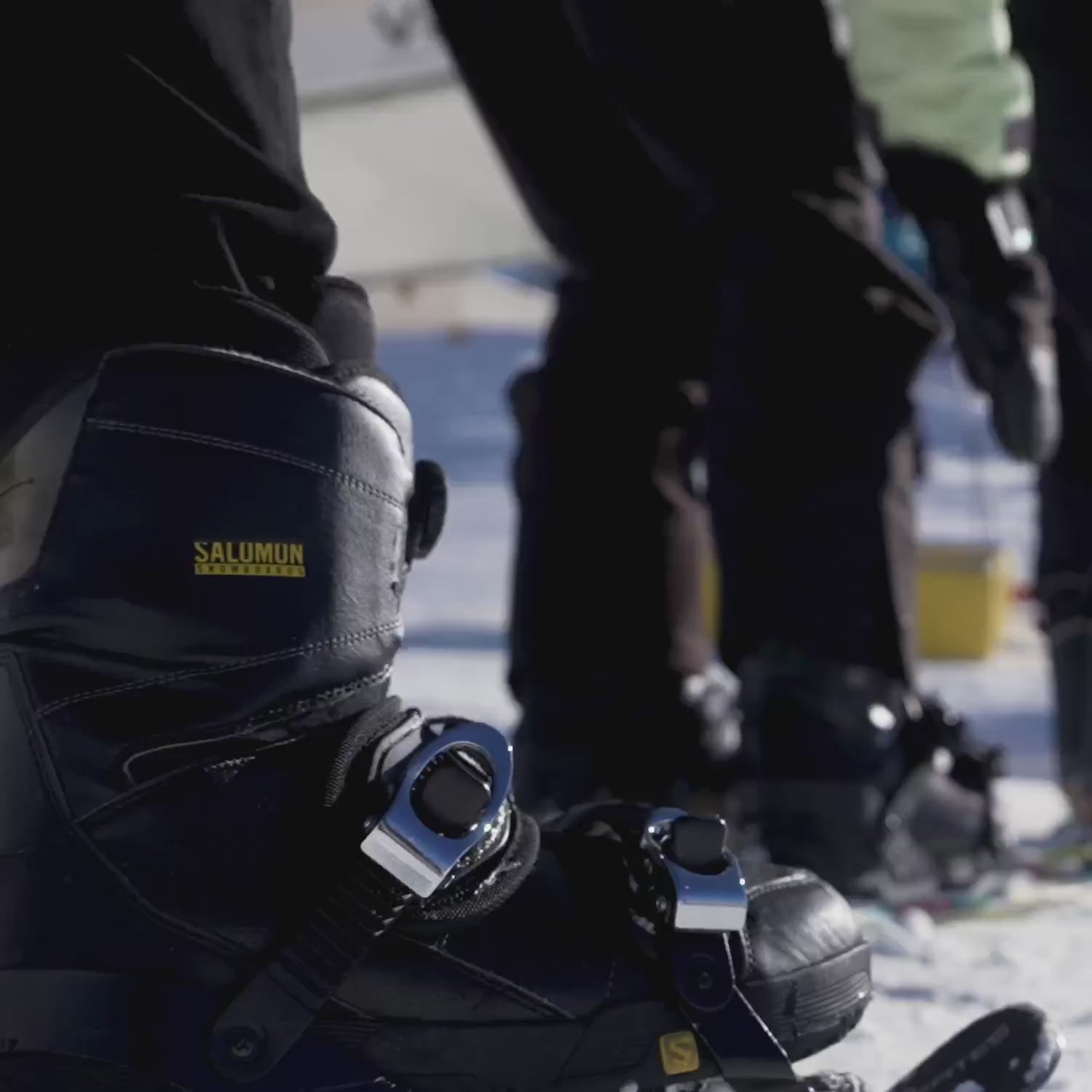

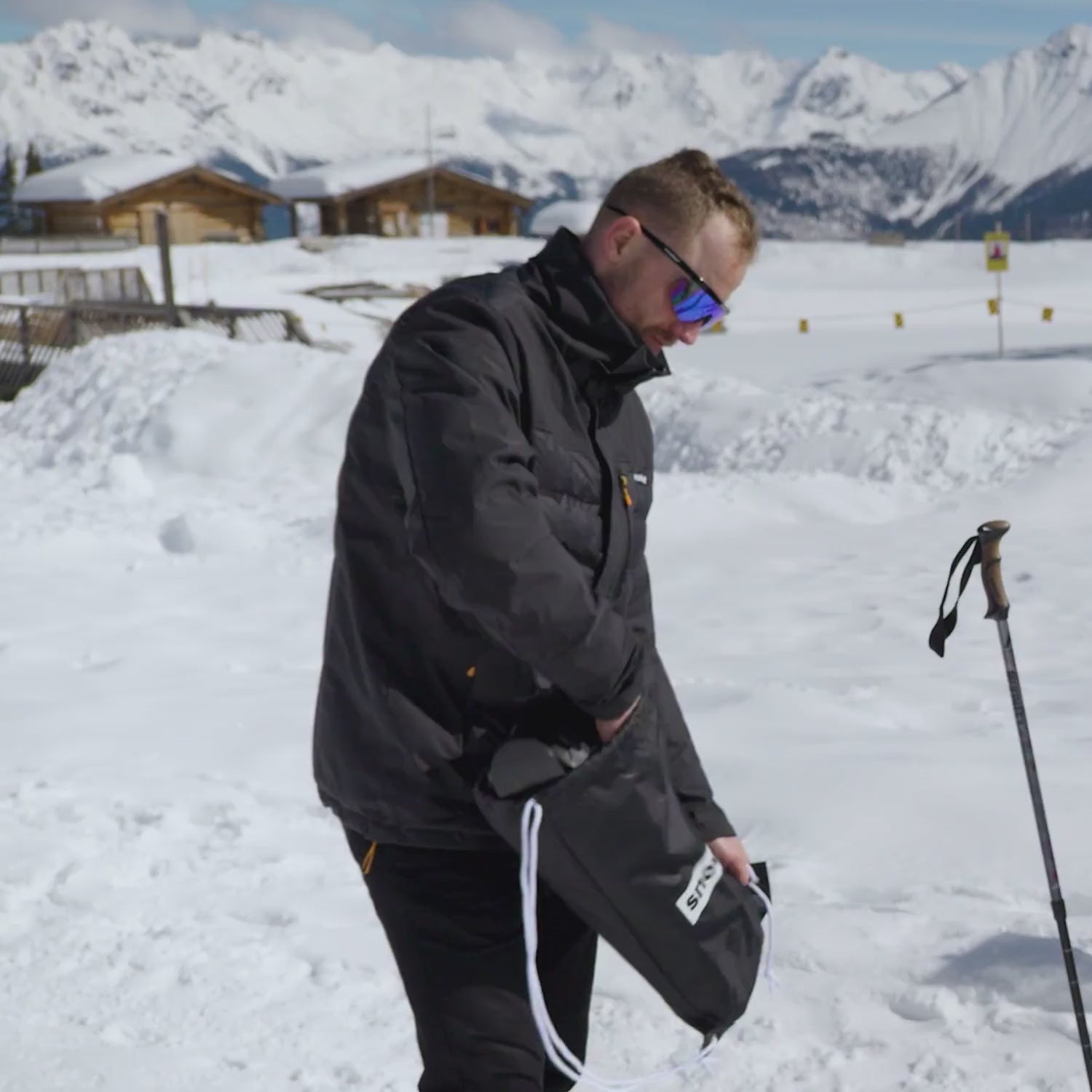
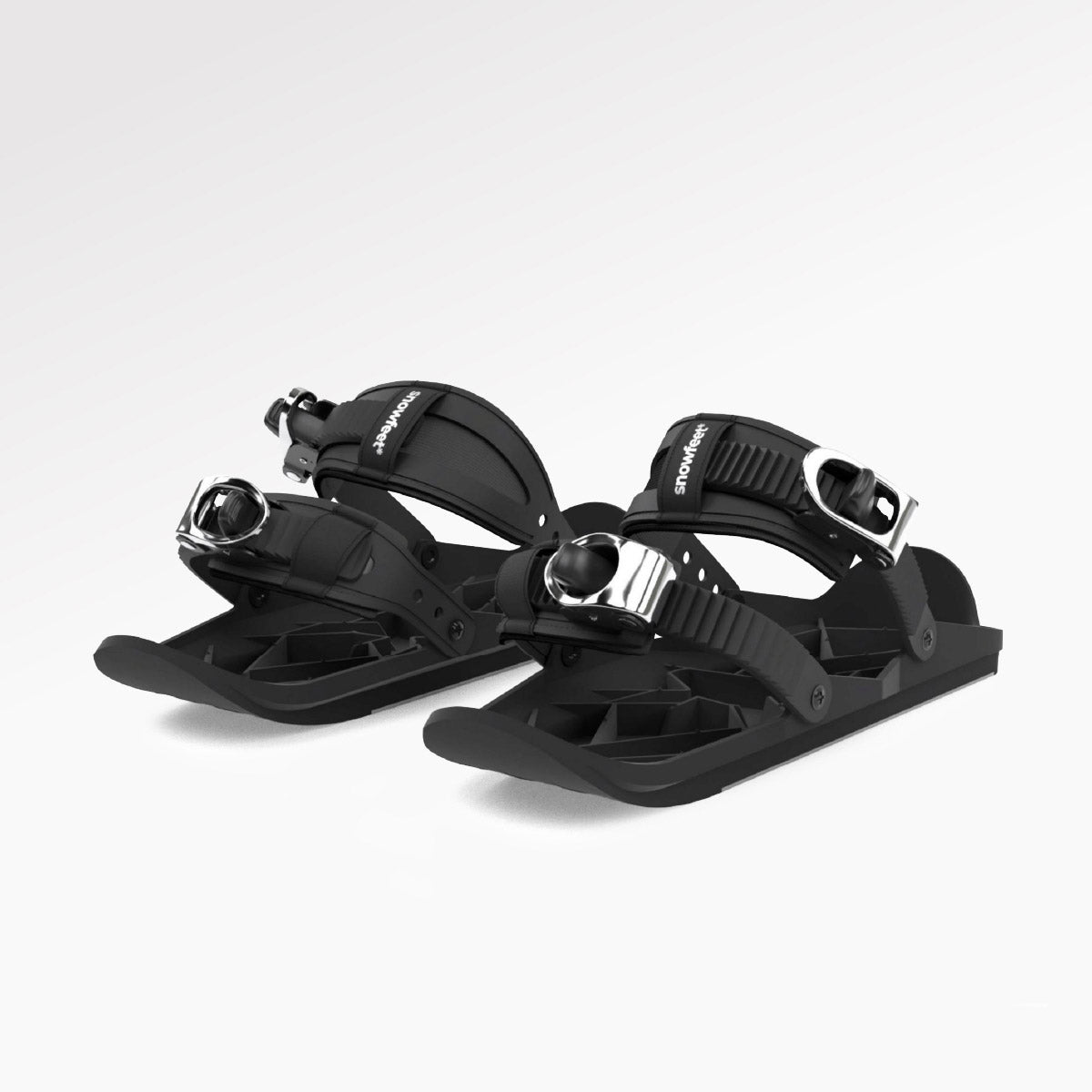
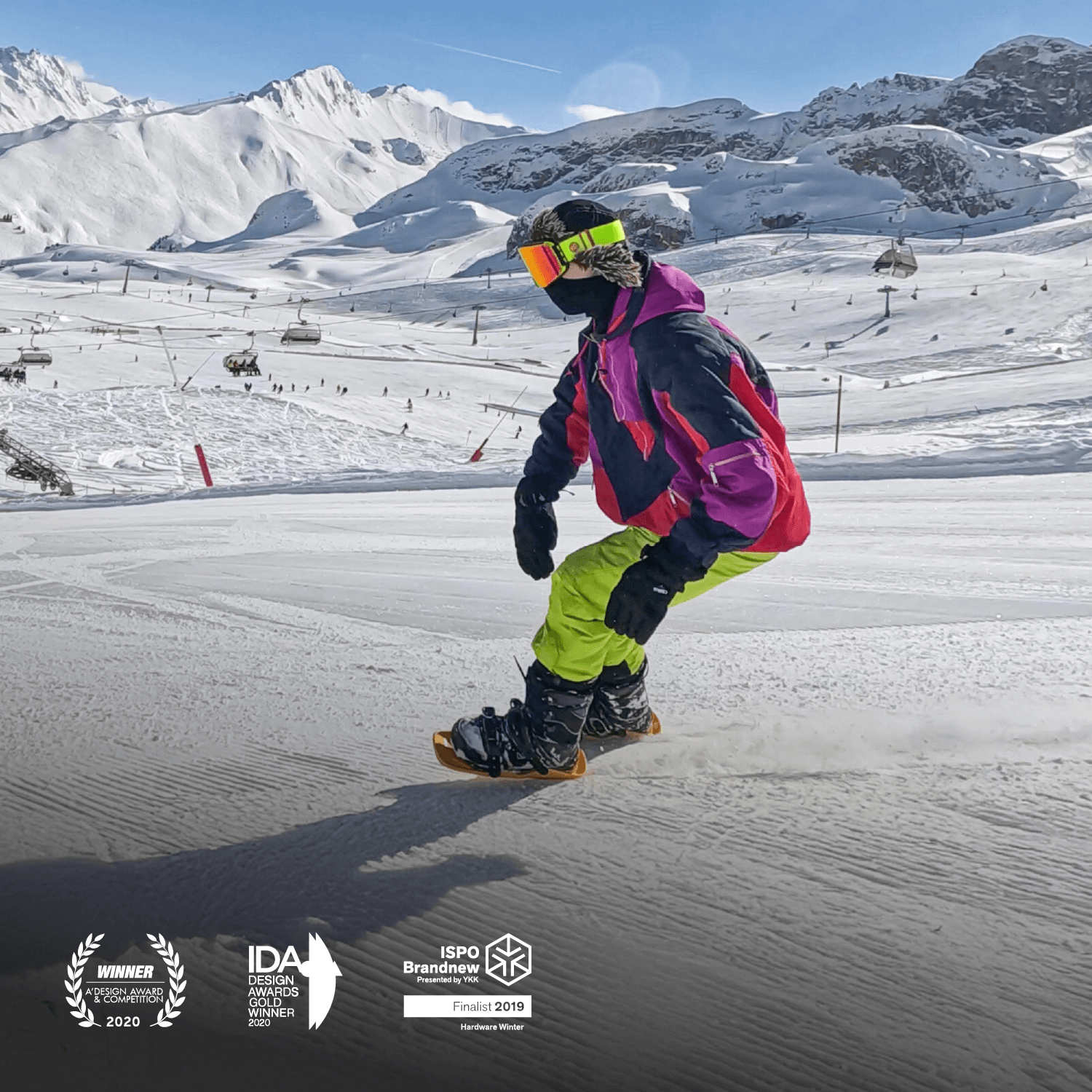
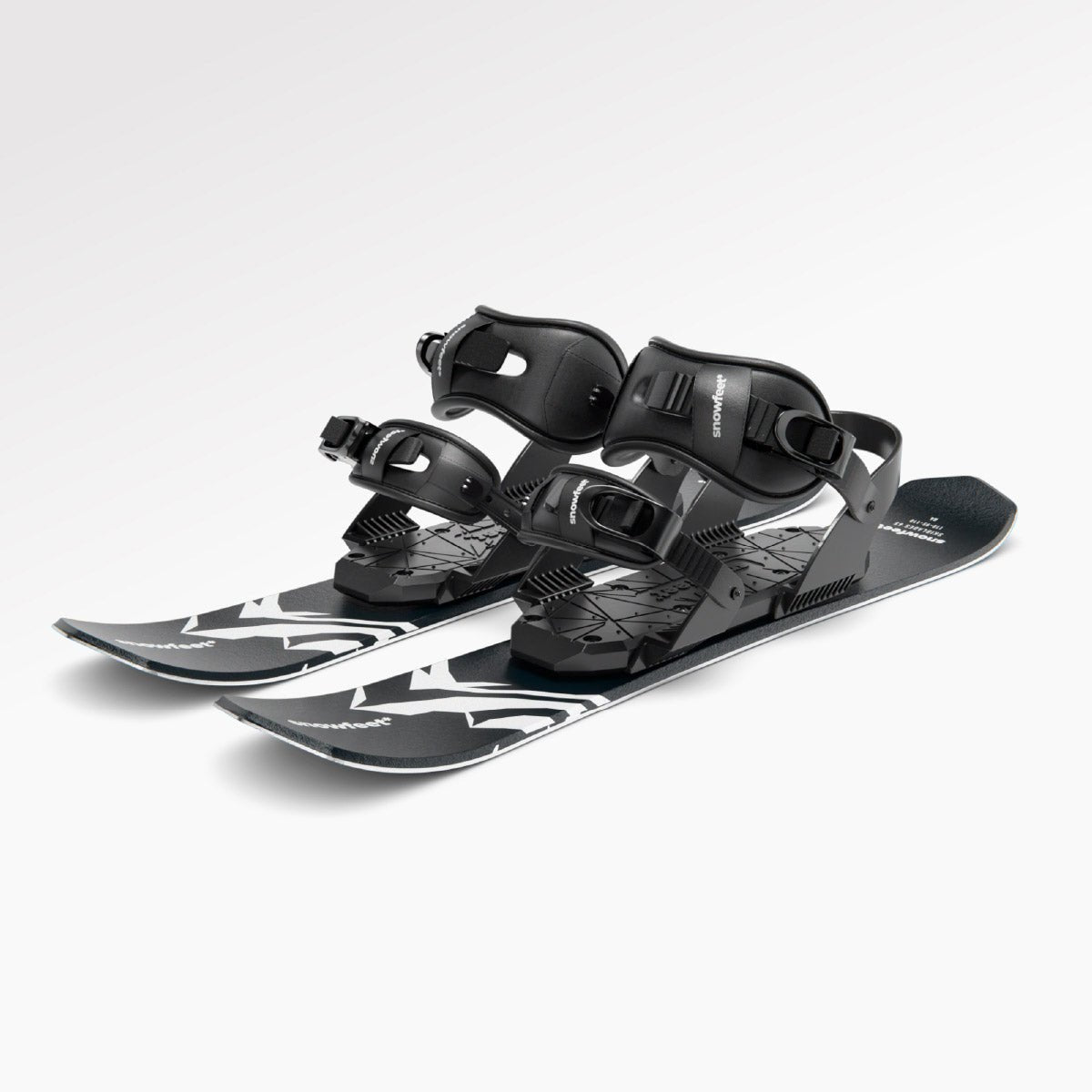
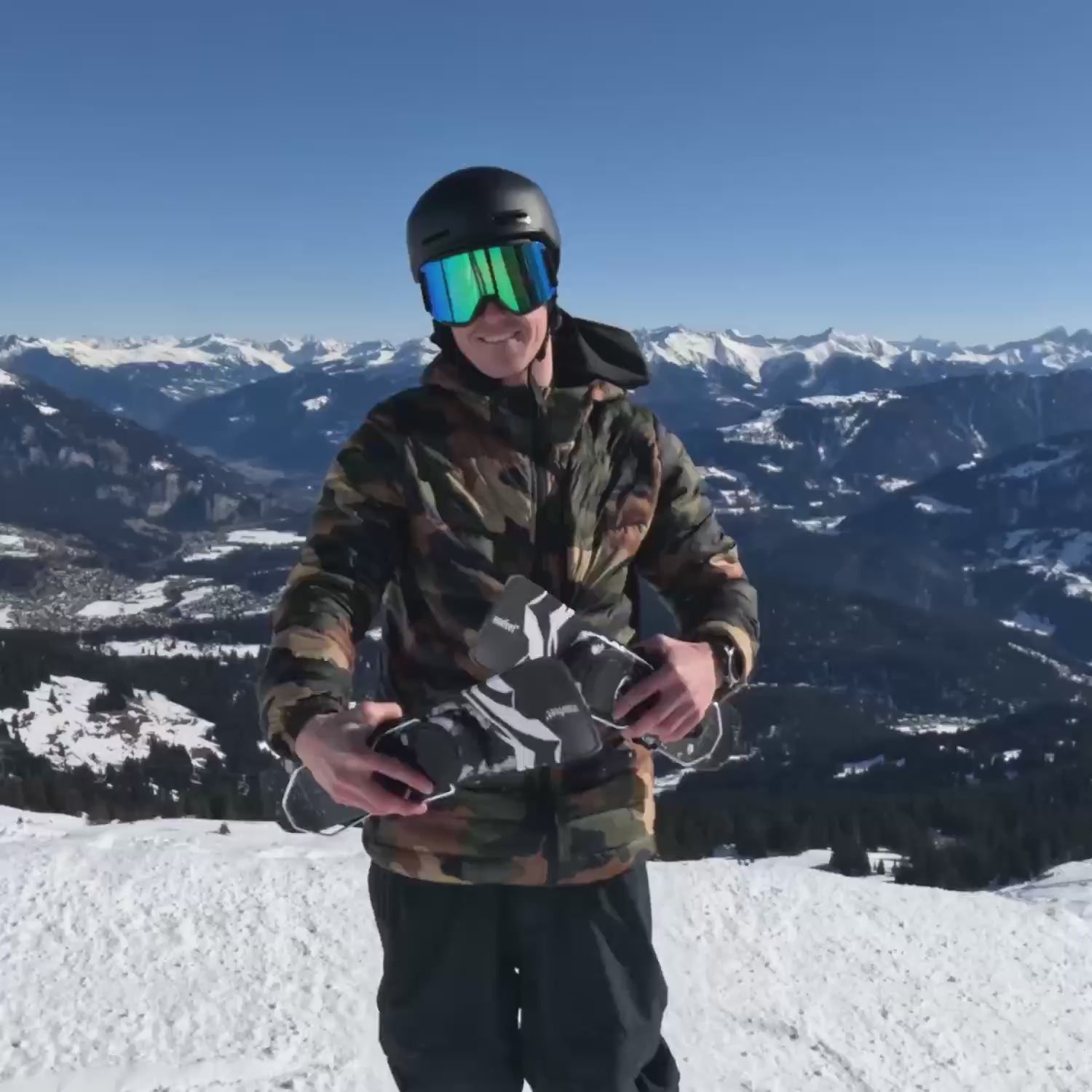
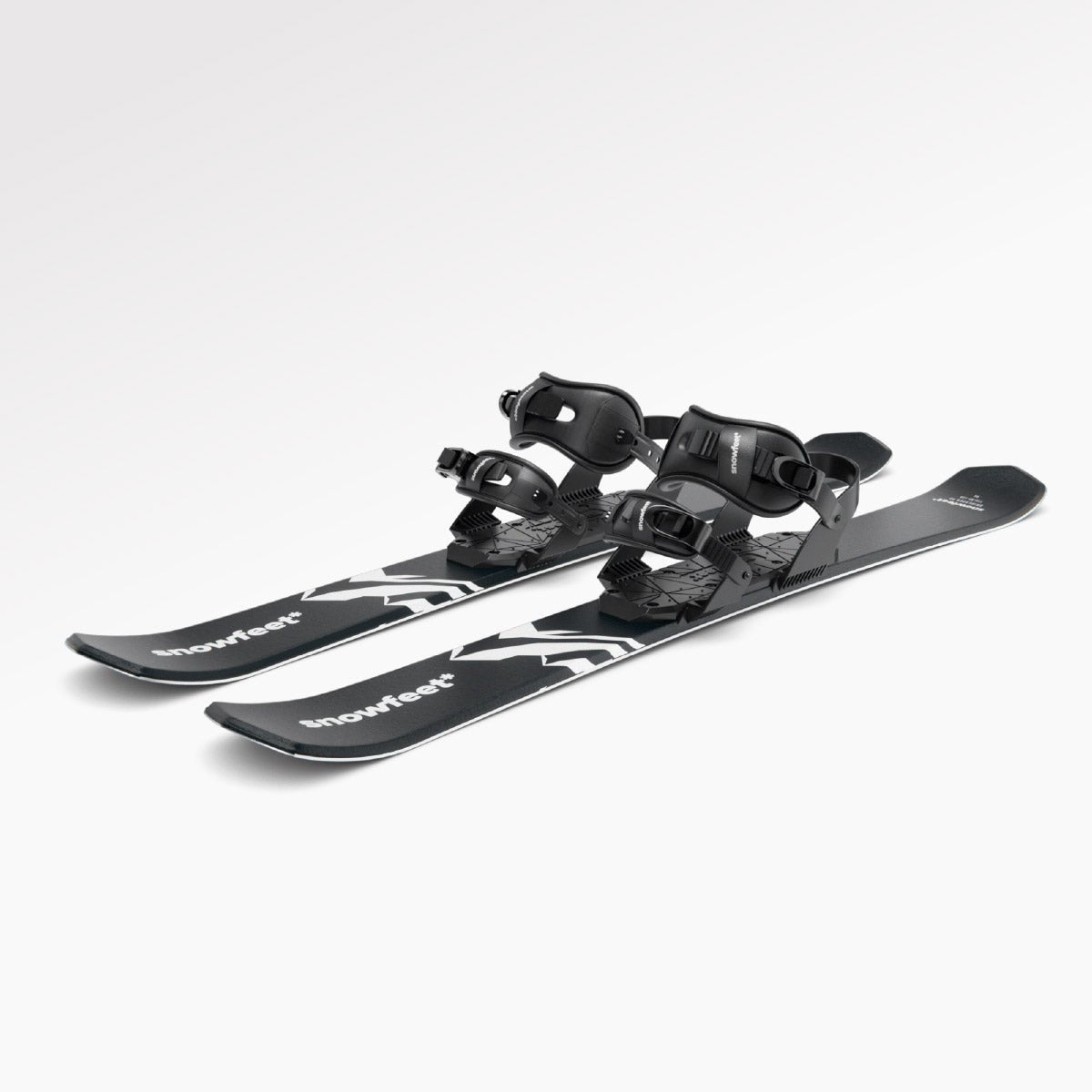
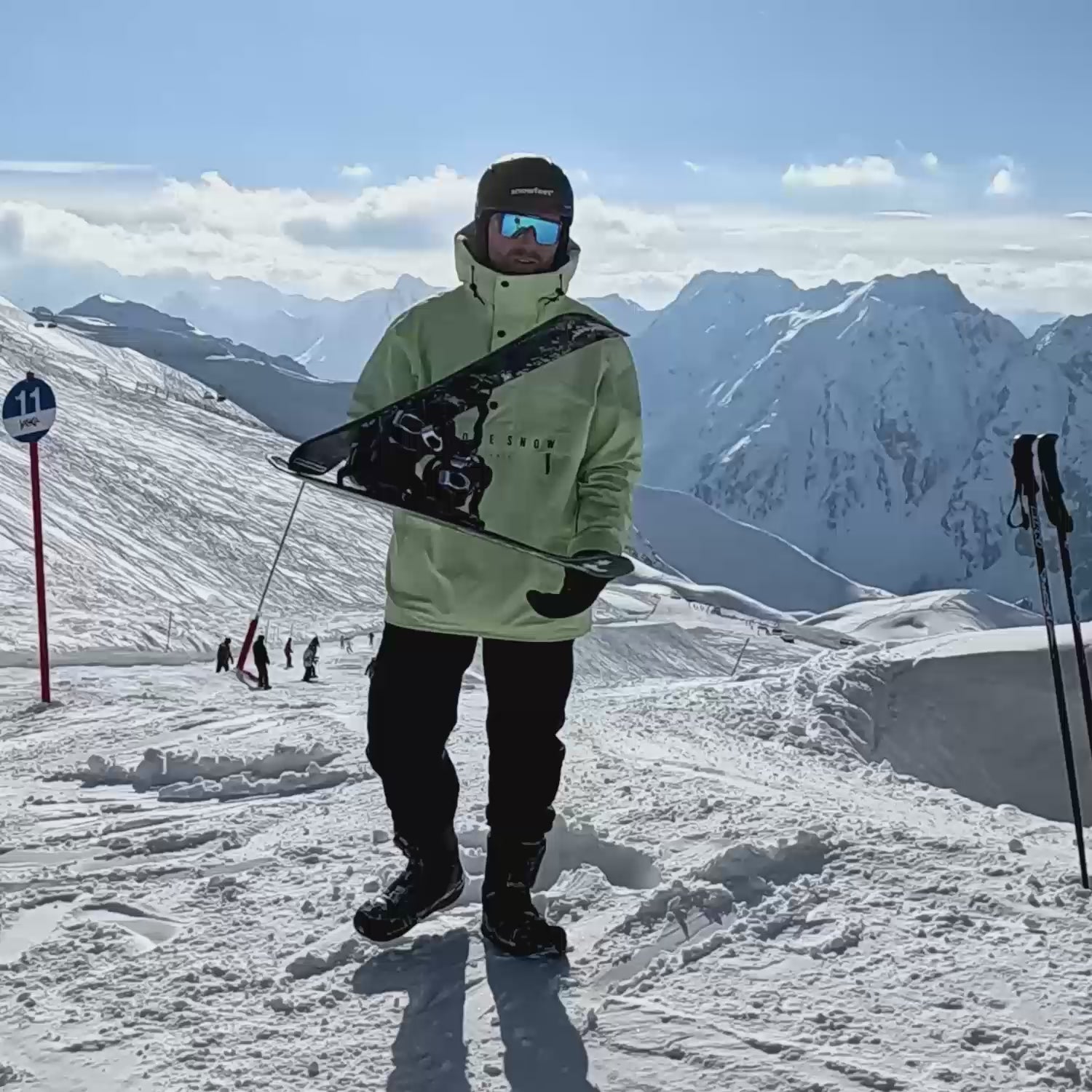
コメントを残す
このサイトはhCaptchaによって保護されており、hCaptchaプライバシーポリシーおよび利用規約が適用されます。